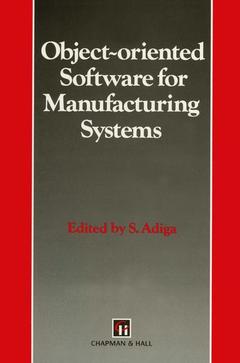Object-oriented Software for Manufacturing Systems, 1993 Intelligent Manufactoring Series
Langue : Anglais
Auteur : Adiga S.

I must confess that I stumbled upon the object-oriented (00) world view during my explorations into the world of artificial intelligence (AI) in search of a new solution to the problem of building computer-integrated manufacturing systems (CIM). In 00 computing, I found the constructs to model the manufacturing enterprise in terms of information, a resource that is common to all activities in an organization. It offered a level of modularity, and the coupling/binding neces sary for fostering integration without placing undue restrictions on what the individual applications can do. The implications of 00 computing are more extensive than just being a vehicle for manufacturing applications. Leaders in the field such as Brad Cox see it introducing a paradigm shift that will change our world gradually, but as radically as the Industrial Revolution changed manufacturing. However, it must be borne in mind that simply using an object-oriented language or environment does not, in itself, ensure success in one's applications. It requires a different way of thinking, design discipline, techniques, and tools to exploit what the technology has to offer. In other words, it calls for a paradigm shift (as defined by Kuhn in The Structure of Scientific Revolution, a classic text in the history of science).
1 Introduction.- 1.1 Objects and object-oriented software.- 1.2 Objective and target audience of the book.- 1.3 Organization of the book.- 1.4 Conclusion.- References.- One Conceptual Background.- 2 Object-oriented software systems: Concepts.- 3 Object-oriented software: Relevance to manufacturing.- Summary: Part One.- Two Design and Implementation Techniques.- 4 Towards an object-oriented architecture for CIM systems.- 5 Prototyping object systems and reusable object libraries.- 6 Object-oriented databases.- 7 Comparing object-oriented programming languages.- Summary: Part Two.- Three Manufacturing Applications.- 8 FlowStream: An object-oriented plant-floor management system.- 9 OOPS in real-time control applications.- Summary: Part Three.- Four Management and Organizational Issues.- 10 Management issues in adopting object-oriented technology.- 11 Concluding remarks.- Appendix A: OO resources Paul Worhach.
Date de parution : 10-2012
Ouvrage de 270 p.
15.5x23.5 cm
Mots-clés :
© 2024 LAVOISIER S.A.S.



